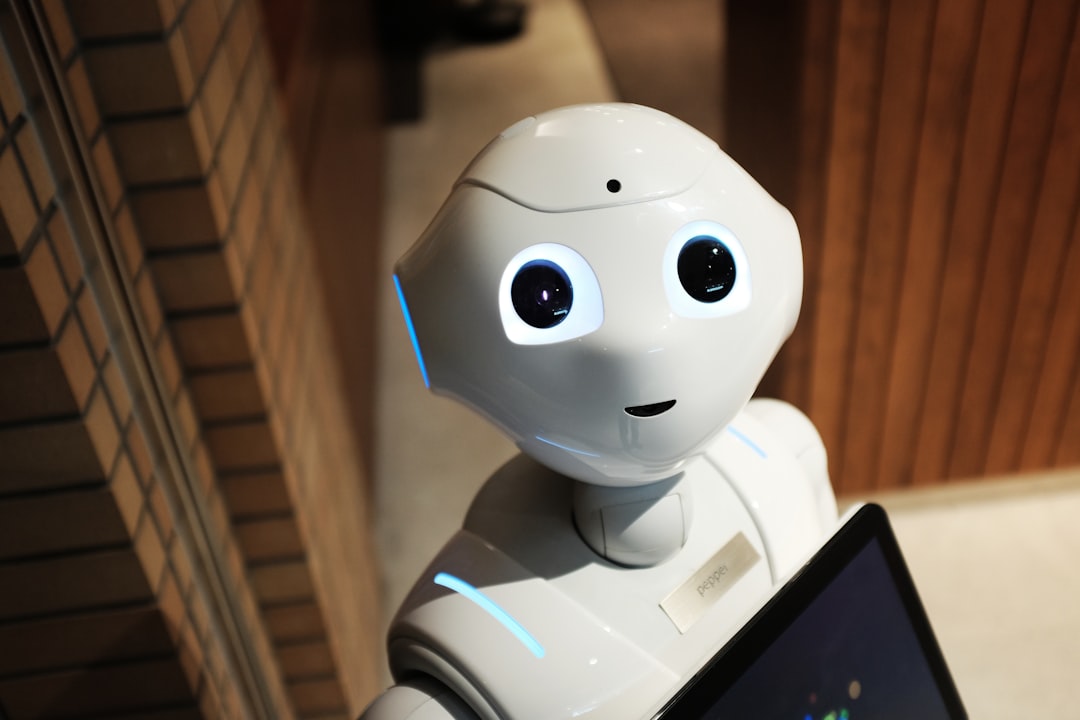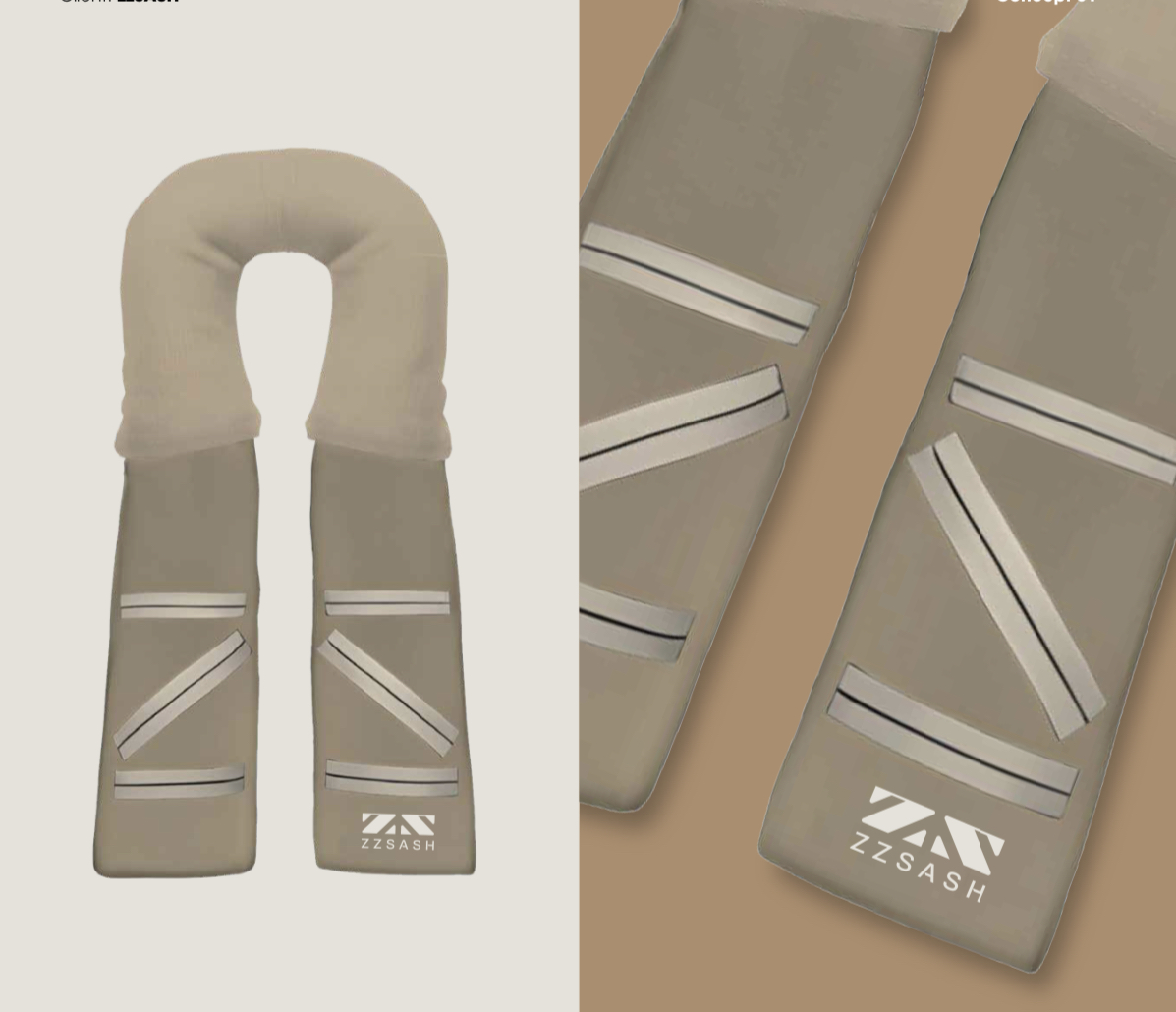- NOVELCITY News | Product Innovations January 6, 2025 - April 21, 2025
Notice This: Cosmos Isn’t Just a Platform—It’s a Signal: From Sim to System: What NVIDIA’s Cosmos Means for Gen-N Product Innovation, Infrastructure, and Imagination
NOVELCITY NEWS | Editorial Desk
Published: April 21, 2025
By Wesley Phillippe | NOVELCITY News | Tech + Future of Work

When NVIDIA launched its Cosmos World Foundation Model platform at CES 2025, the headlines celebrated the tech. But at NOVELCITY News, especially in our Notice This environment, we’re not just watching the tools—we’re scanning the tectonic shifts underneath.
Cosmos is not just another AI toolchain. It’s the blueprint for something bigger: the formalization of Physical AIinfrastructure. The fusion of robotics, simulation, synthetic media, and reinforcement learning is creating a new class of product—and we’re calling it Worldware.
And here's what Gen-N needs to notice:
What Cosmos Is Solving (and Why That Matters)
1. The Cost Problem
Training autonomous vehicles, robotics, or humanoid systems in the real world is wildly expensive and inefficient. You need warehouses, road miles, data labeling teams, and redundant physical safety checks. Cosmos flips that: train and simulate before you ship.
2. The Scarcity Problem
Real-world edge cases (black ice, emergency detours, chaotic warehouse workflows) are too rare to gather at scale. Cosmos lets developers generate an infinite “multiverse” of what-ifs—accelerating model maturity while protecting real humans from untested deployments.
3. The Trust Problem
When generative AI becomes physical—think drones, delivery bots, or surgical arms—we’re not talking about spam emails or image blur. We’re talking about physical safety. Cosmos gives developers the guardrails, tokenizers, and synthetic tests needed to build trustworthy AI at scale.
The Bigger Story: Cosmos as a New Layer of the Innovation Stack
Gen-N isn’t just watching this—we’re building on it. Cosmos opens the door for:
- Startup-Ready Simulation: You don’t need a $10M testbed. With Cosmos + Omniverse + NeMo, garage founders can model logistics bots, autonomous delivery networks, or wearable exosuits before raising capital.
- Democratized Robot Literacy: What Figma did for design, Cosmos could do for robotics. Plug-and-play environments, customizable models, and accessible simulations mean high school teams, civic orgs, and freelancers can co-create smarter, safer systems.
- Next-Gen Job Creation: Simulation engineers, multiverse testers, “robot storytellers” (yes, that’s real)—these are the job categories emerging from Cosmos' ripple effect. Gen-N should notice: the workforce of tomorrow might start on Hugging Face.
From Noticing Needs to Designing the Future
Now’s the time to imagine the product innovations Cosmos can catalyze:
- AI Co-Pilots for Care Work: Simulate home care scenarios before real-world deployment. Ensure robots respect personal space, speech patterns, cultural nuance.
- Neighborhood-Specific Urban Bots: Train delivery robots on hyperlocal datasets—curb heights in Compton, weather conditions in Detroit, cultural gestures in Miami’s Little Haiti. Cosmos + civic data = place-based robotics.
- Multiverse Coaching for Human Skills: Cosmos isn’t just for machines. Train humans through hyperreal scenarios: de-escalation for public safety, multilingual disaster response, neurodiverse classroom management.
- Narrative-Driven Robot Interfaces: Combine synthetic media and world models to train robots on tone, story, and sentiment—not just function. A nursebot shouldn’t just dispense meds—it should empathize, remember, and reassure.
Plug In: How Gen-N Can Build on Cosmos
We’re calling on:
- Product designers to rethink AI interfaces that move—across space, sectors, and identities.
- Public sector leaders to use Cosmos for policy prototyping, urban AI design, and civic robotics testing.
- Community technologists to develop open-source robot literacy tools using Cosmos simulation as a launchpad.
- Creative technologists to tell better stories—with robots as companions, co-creators, or conflict navigators.
Cosmos isn't just NVIDIA’s drop—it’s a ripple through the innovation field. The Gen-N question is:
Now that we can build a world in simulation… what kind of world will we design?
Final Notice from NOVELCITY News
Physical AI is here—and Cosmos is the sandbox. But the real transformation isn’t in NVIDIA’s architecture. It’s in the collective architecture we now have the power to imagine, simulate, and ship.
Cosmos is just the scaffolding. The rest is up to the builders.
Want to write about what you're building in this new era of Physical AI? Pitch to NOVELCITY News.
Email: ncnews@novelcitychamber.com
Subject: “Notice This Submission – [Your Name] – Cosmos Product Innovation”
#GenN #NoticeThis #PhysicalAI #NVIDIA #CosmosWFMs #SimulationToSystem #InnovationInfrastructure #Worldware #NOVELCITYNews
NCN – DISCLAIMER
NOT FOR REPRINT
© 2007–2025 NOVELCITY CHAMBER OF INNOVATION. All rights reserved. Request academic re-use from www.copyright.com. For all other uses, contact ncnews@novelcitychamber.com.
- NOVELCITY News | Product Innovations
Examine This: Airbag, Reimagined: How ZF Group’s Side Impact Tech Signals a Smarter Future for Vehicle Safety
NOVELCITY NEWS | Editorial Desk
Published: April 22, 2025
By Wesley Phillippe | NOVELCITY News | Gen-N Product & Systems Desk

From Cushion to Calculation: When Airbags Think Ahead
What if your car could predict a crash and shield itself before the hit?
That’s not science fiction—it’s the latest innovation from German manufacturer ZF Group, which has developed an external airbag system that deploys in under 0.1 seconds to protect against side collisions. The airbag works as part of a pre-crash sensor system, identifying threats and launching a cushion shield on the vehicle’s exterior—before contact occurs.
This is not just protection. It’s anticipation.
And according to ZF Group’s estimates, it could reduce fatal injury by up to 40% in side-impact crashes.
Gen-N Take: What Happens When Safety Becomes Smart?
As a generation raised on predictive tech—algorithmic playlists, real-time traffic reroutes, and personalized medicine—Gen-N doesn’t just want features. We expect systems. Systems that learn, adapt, and protect.
ZF’s external airbag isn’t just a car part—it’s an AI-informed guardian. It marks the transition from reactive safety (like traditional seatbelts and crash beams) to proactive safety—one that uses sensors, predictive analytics, and milliseconds of computation to minimize injury or death.
Why It Matters: Innovation in the Margins
Side collisions—especially at intersections or during T-bone crashes—are among the deadliest and hardest to defend against in modern car design. Traditional side impact bars help, but physics has limits when impact is immediate.
That’s where ZF’s system innovates—not by changing the shape of the vehicle, but by adding time to react. In tech terms: it creates a micro-buffer window, turning milliseconds into life-saving margins.
From Gen-N Innovation to Ecosystem Potential
This system opens the door to a larger product innovation conversation:
-
Could ride-share fleets (Uber, Lyft, Waymo) integrate external airbags as a standard?
-
Could insurance premiums adjust based on proactive collision-prevention tech like this?
-
Could these smart systems eventually talk to city infrastructure (e.g. smart traffic signals, road hazard alerts)?
-
Could this tech scale down to motorcycles or scale up to public transport?
ZF’s innovation shows how products become platforms—and how a single feature becomes a springboard for ecosystem design.
Design with Ethics, Not Just Engineering
But it’s not just about what we can build. The Gen-N question is always: What should we build?
As more cars become predictive, we must ask:
-
Who controls the data that determines crash probability?
-
What if systems malfunction or discriminate in crash triage?
-
How do we ensure every vehicle class (not just luxury) has access to these safety breakthroughs?
In Gen-N design language, equity must ride shotgun.
Examine This: What’s the Real Innovation Here?
It’s not just the airbag.
It’s the ethos behind it—the idea that human lives are worth engineering for before catastrophe strikes.
This is the kind of tech that should get attention—not just because it’s cool, but because it’s conscious.
So yes, ZF’s airbag might inflate in 0.1 seconds.
But its real impact? That could last for generations.
Are You Designing for Impact?
Got a Gen-N safety innovation, predictive system, or sensor-powered product?
Pitch your story to the Product Innovations Column at NOVELCITY News.
ncnews@novelcitychamber.com | Subject: NCN Submission – Product Innovation Feature
#ExamineThis #CarSafety #GenNTech #PredictiveInnovation #FutureOfMobility #NCNProductSpotlight #ConsciousDesign #NOVELCITYNews
- NOVELCITY News | Future of Education, Science & Technology
Examine This: If More Teachers Are Trained on AI—What System Are We Actually Training Them Into? Why Gen-N must rethink AI professional development from toolkits to transformation—and stop calling this "training" if we’re not ready to fund an actual future
NOVELCITY NEWS | Examine Environment
Published: April 14, 2025
By Wesley Phillippe | NOVELCITY News | Youth Innovation, Education, Science & Technology

Another report. Another surge. Another stat.
48% of school districts trained teachers on AI in 2024.
That’s double from 2023.
By fall 2025, we’re expected to hit nearly 75%.
On paper, it looks promising. On paper, it always does.
But here at NOVELCITY News, we don’t write from paper—we write from systems.
And through the lens of the Examine Environment, we have to ask:
Are we empowering teachers for the AI revolution—or strapping them into a system they’ll never have power to redesign?
Let’s Examine What the Data Doesn’t Say
The RAND Corporation says the AI PD wave is rising.
But let’s dissect that headline with Gen-N clarity:
-
Most “training” is piecemeal, DIY, and platform-driven.
-
Districts are cobbling resources from YouTube and vendor decks.
-
Some trainings are delivered via newsletters. Yes, newsletters.
-
Over half of teachers in high-poverty districts have still received zero AI training.
We’re calling this preparing the future of education?
This isn’t innovation—it’s improvisation.
PD ≠ Systemic Change
We don’t just need more AI workshops.
We need a complete redefinition of what it means to be a teacher in a machine-augmented world.
Because if you train teachers to use AI like a search engine—but not as a tool for reimagining pedagogy, curriculum design, or student voice—
then all you’re doing is giving them new tasks, not new power.
What AI PD Should Actually Be Teaching
Let’s flip the frame. What if Gen-N rewrote the script?
AI PD should not be about tools. It should be about systems.
Here’s what that means:
1. Teach Tech Literacy + Data Justice
Not just how to prompt ChatGPT—but how to analyze dataset bias, flag algorithmic discrimination, and demand transparency from edtech vendors.
“Click here to generate a quiz” isn’t a skill. “Critique this model’s output for racial bias” is.
2. Localize AI Curriculum to Community Contexts
Imagine AI PD that helps teachers build models with their students, trained on local history, indigenous knowledge, or neighborhood challenges.
Not just consumption. Co-creation.
3. Center the Human: Empathy, Ethics, and Agency
Teachers need frameworks for emotional intelligence in AI classrooms—how to design assignments that build character, not just chatbot fluency.
We’re not just preparing students to work with AI—we’re preparing them to lead it.
4. Don’t Train Teachers to Survive the System—Train Them to Rewrite It
Every teacher trained on AI should leave with:
-
A redesign of one system they interact with (grading, assessments, IEPs, scheduling)
-
A chance to pitch it to leadership
-
A funded pathway to implement it
PD that doesn’t lead to change is just performance.
And About That Equity Gap…
Let’s talk about the real divide:
By fall 2025, 90% of teachers in low-poverty districts may be trained on AI.
Only 60% of teachers in high-poverty districts will have access to the same.
What does that mean?
It means we’re on track to reproduce the exact same digital divide we said AI would help fix—except now it’s happening faster, in higher resolution, and with fewer regulators paying attention.
Gen-N insight: If AI PD doesn’t come with funding, policy, and equity audits, it’s not preparation—it’s acceleration of inequality.
Final Examine: So What Are We Training For?
We are at a systems inflection point in education.
This moment isn’t about apps. It’s about architecture.
About whether we’re scaffolding a new generation of educators to lead innovation, or just making them more efficient task-runners in a system that won’t change for them.
If we don’t shift now, we’ll end up with:
-
AI-literate students in inequitable classrooms
-
Teachers with toolkits but no time
-
Districts chasing tech trends instead of justice goals
The future of education, science, and technology demands something bolder:
→ Teachers as system redesigners
→ AI as a collaborative agent, not a compliance monitor
→ PD that prepares educators to teach through disruption, not just survive it
Are You an Educator Rethinking AI?
If you’re building more equitable pathways, disrupting PD norms, or co-designing AI tools that put teachers first—we want your voice in the Examine Environment.
Email: ncnews@novelcitychamber.com
Subject Line: NCN ARTICLE SUBMISSION – [Your Name] – Examine This
#ExamineThis #AIinEducation #EquityInPD #GenN #FutureOfLearning #SystemRedesign #NOVELCITYNews
- NOVELCITY News | Future of Education, Science & Technology
A Better Way to Relax—And Advertise? How ZZSASH Is Disrupting Travel Comfort While Quietly Reimagining Wearable Brand Marketing
NOVELCITY NEWS | Product Innovations | Examine This | Published: April 25, 2025
By Wesley Phillippe


In a fast-paced world where attention is fleeting and comfort is king, a simple, smart invention is doing something extraordinary: easing the neck… while lifting the brand.
Enter ZZSASH—the ultra-comfortable, ergonomically designed neck sash that’s redefining how we think about travel, lifestyle, and mobile advertising. More than a pillow, ZZSASH is a branded experience—fashion-forward, utility-driven, and ready to scale.
Conceived by Wesley Phillippe in Culver City, California, the idea sparked during a quiet moment by the pool—watching his daughter swim while resting a towel around his neck. That sensation inspired the first sketch, which quickly led to a prototype and provisional patent. With fashion guidance from his wife Meka DeMille, the ZZSASH evolved into a high-quality, consumer-ready product with style, comfort, and storytelling potential.
The Quad Sales Model: Your Brand in Motion
ZZSASH introduces a game-changing branding opportunity through its Quad Sales Model—featuring four dedicated ad zones (called “Quads”) on every sash. These make the product ideal for:
-
Corporate and nonprofit sponsorships
-
University or team branding
-
Event-based giveaways and swag packages
-
Public health, tech, wellness, or civic campaigns
Wearable Media That Moves With the User
Unlike T-shirts or tote bags, ZZSASH is worn during flights, road trips, events, or even on campus—providing daily impressions wherever the wearer goes.
Updated ROI Estimates (3–4x More Impact)
Based on revised projections factoring travel behavior, social sharing, and event visibility:
-
Low Estimate: 1,500 impressions × $0.015 = $22.50 per unit
-
High Estimate: 4,000 impressions × $0.04 = $160.00 per unit
Brand spend per full unit: $4,000 total (for 4 placements on a single batch)
Projected value per unit in earned media: $90–$160, with scalable upside based on duration of use, travel exposure, and peer visibility.
Not Just a Swag Item—A Swag Strategy
ZZSASH is already being considered as a next-generation event giveaway. Whether handed out at tech summits, sports events, wellness expos, or VIP activations, it becomes:
-
A gift with purpose
-
A wearable storytelling device
-
A mobile impression engine
Every ZZSASH given away is a branded ambassador in motion.
Rather than a one-time-use item, it keeps delivering impressions, utility, and social visibility long after the event ends.
Add Digital: QR Codes, NFC Tags, and Smart Integrations Coming Soon
The roadmap includes:
-
Embedded QR or NFC chips that redirect users to branded landing pages
-
Content-based activations (campaigns, video messages, loyalty rewards)
-
Trackable engagement metrics for marketers
The Linus Effect: Affinity Meets Influence
Wesley Phillippe calls it the Linus Effect—the idea that ZZSASH becomes something more than merch. It becomes part of a person’s routine. Their go-to. Their comfort. Their story.
And when they love it, they’ll wear it—and share it.
Brand Ambassador Promo: Sell 2, Get 1 Free
ZZSASH also launched a brand ambassador program, perfect for athletes, creators, or fans: Sell 2 → Get 1 Free.
Leverage your network, earn rewards, and wear the brand that helps people relax smarter.
Stress Awareness Month Promo: #RELAX
April is Stress Awareness Month. To honor it, ZZSASH is offering 30% off sitewide.
Visit ZZSASH.com and use discount code: #RELAX
Final Examine: The Future of Swag Is Smart, Soft, and Stylish
ZZSASH isn’t just another neck pillow.
It’s a platform for branding.
A statement of comfort and innovation.
A return-generating investment for marketers seeking real, visible, lasting exposure.
Whether you're attending a conference or launching a city-wide campaign, one thing is clear:
ZZSASH is the swag that doesn’t stop working.
#ExamineThis #ZZSASH #QuadSales #WearableMarketing #EventSwag #BrandMobility #FashionInnovation #WesleyPhillippe #StressAwarenessMonth #RELAX #SmartSwag #ProductInnovation #GenN #LifestyleMarketing
#SystemRedesign #NOVELCITYNews
LAUNCHPADS
CONTACT
6695 Green Valley Circle #4671
Culver City, CA 90230
ncnews@novelcitychamber.com
ABOUT NOVELCITY NEWS
NCN is the storytelling engine for Gen-N—where journalism meets the future of consulting, systems meet stories, and every article builds toward the next economy. We examine, elevate, and engineer narratives that drive innovation, equity, and infrastructure at every scale. Powered by NOVELOPERS. Written for what’s next.
©2007-2025 Copyrights by NOVELOPERS LLC All Rights Reseved.
